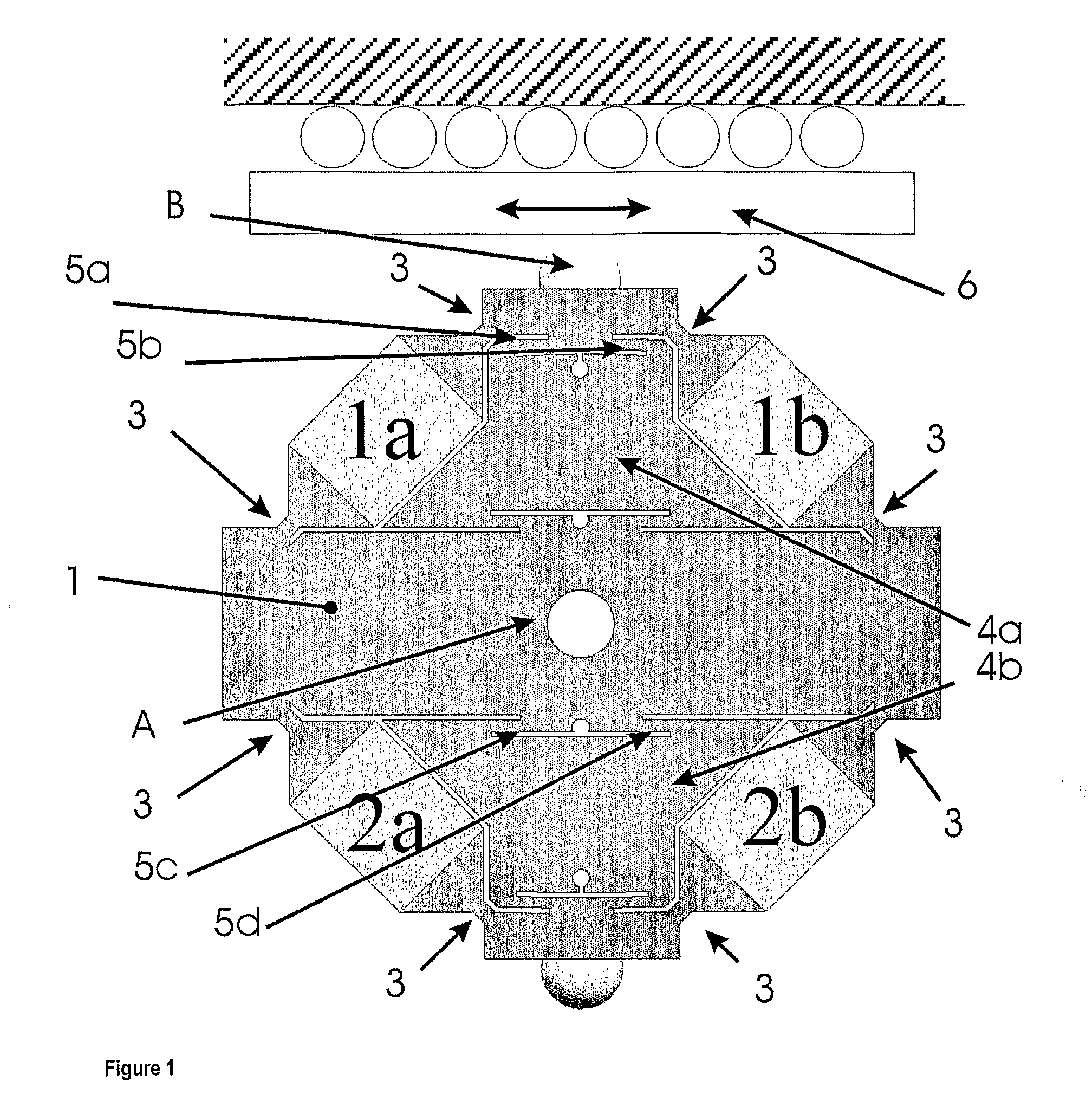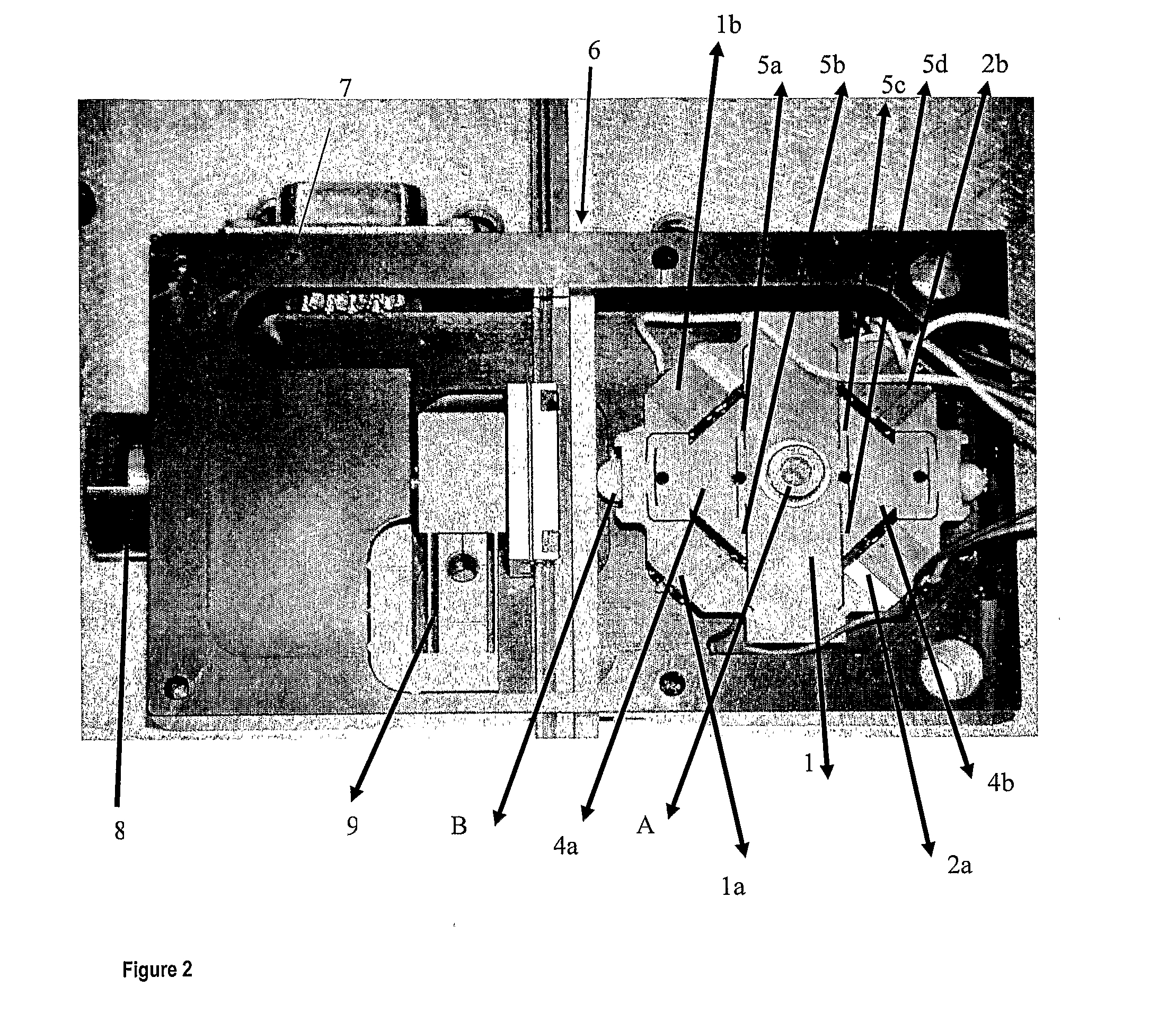Positioning Motor and Apparatus
a positioning motor and positioning device technology, applied in the field of motors, can solve the problems of limited positioning resolution of piezoelectric ultrasonic motors, inability to combine direct positioning modes, and inability to achieve direct positioning modes, and achieve optimal working efficiency and optimal efficiency.
- Summary
- Abstract
- Description
- Claims
- Application Information
AI Technical Summary
Benefits of technology
Problems solved by technology
Method used
Image
Examples
Embodiment Construction
[0018]Operation of the stator module 1 of the piezoelectric motor according to the invention is based on the simultaneous operation in the resonant vibration mode and the direct positioning mode. As such the resultant motion of the driven part 6 consists of a motion caused by the resonant vibration mode and a correction motion carried out by the direct positioning mode.
[0019]1. The Resonant Vibration Mode
[0020]When piezoelectric actuators 1a and 1b or 2a and 2b are deformed in opposition, for instance anti-phase operation, at a predefined frequency, the horizontal vibration mode is excited. This will cause a strongly enlarged vibration of the contact point (B) in horizontal direction. When piezoelectric actuators 1a and 1b or 2a and 2b are deformed in identical manner, for instance phase operation, at a predefined frequency, the vertical vibration mode is excited. This will cause a strongly enlarged vibration of the contact point (B) in vertical direction.
[0021]Optimal efficiency is...
PUM
 Login to View More
Login to View More Abstract
Description
Claims
Application Information
 Login to View More
Login to View More - R&D
- Intellectual Property
- Life Sciences
- Materials
- Tech Scout
- Unparalleled Data Quality
- Higher Quality Content
- 60% Fewer Hallucinations
Browse by: Latest US Patents, China's latest patents, Technical Efficacy Thesaurus, Application Domain, Technology Topic, Popular Technical Reports.
© 2025 PatSnap. All rights reserved.Legal|Privacy policy|Modern Slavery Act Transparency Statement|Sitemap|About US| Contact US: help@patsnap.com



